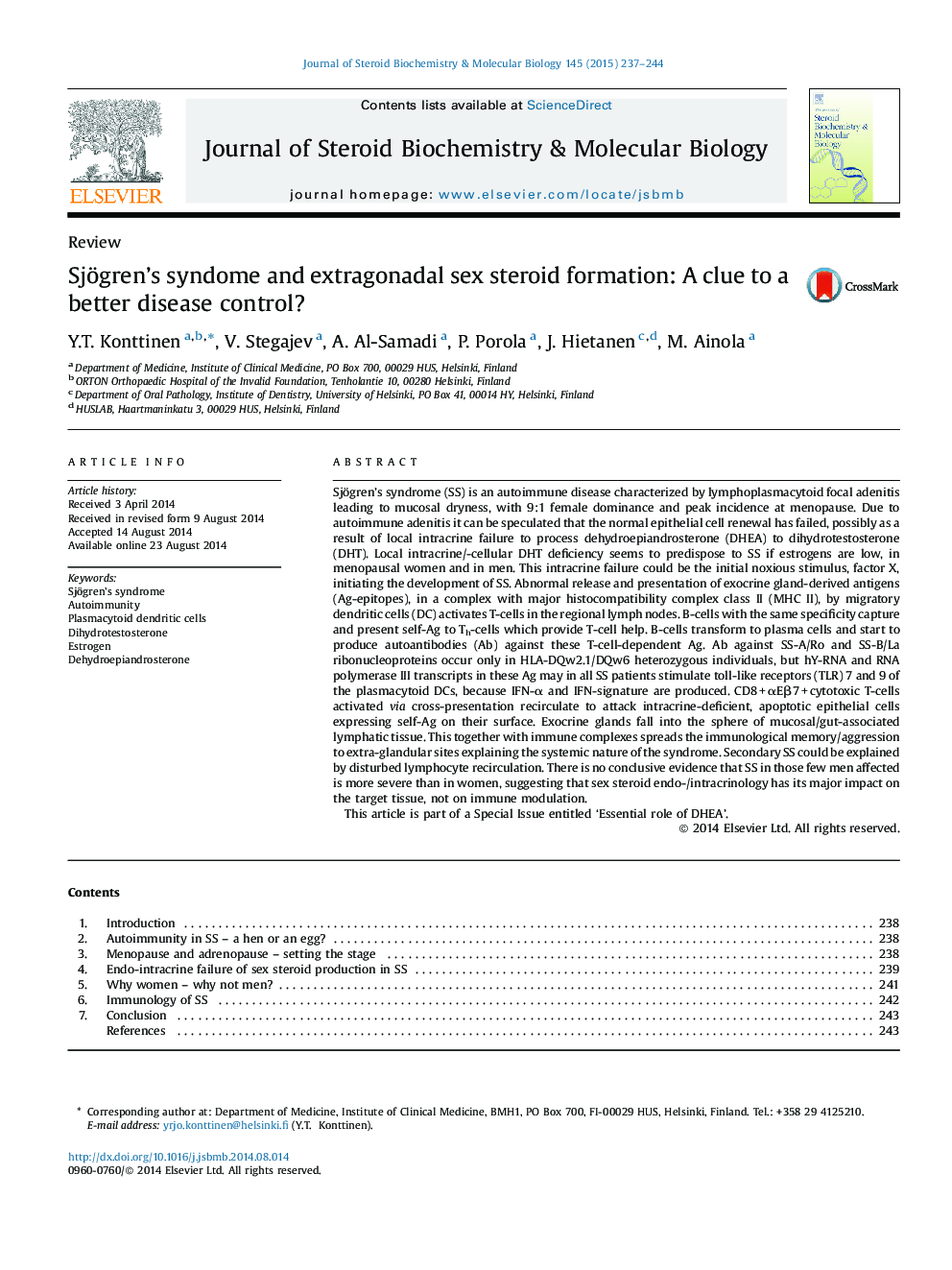| کد مقاله | کد نشریه | سال انتشار | مقاله انگلیسی | نسخه تمام متن |
|---|---|---|---|---|
| 1991464 | 1541004 | 2015 | 8 صفحه PDF | دانلود رایگان |

• Salivary gland epithelial cells produce by and for themselves DHT using intracrine enzymes.
• Menopause increases the need for intracrine DHEA-DHT conversion in all women.
• Intracrine DHT production is impaired in Sjögren’s syndrome.
• Men are protected by direct testosterone-DHT conversion.
Sjögren’s syndrome (SS) is an autoimmune disease characterized by lymphoplasmacytoid focal adenitis leading to mucosal dryness, with 9:1 female dominance and peak incidence at menopause. Due to autoimmune adenitis it can be speculated that the normal epithelial cell renewal has failed, possibly as a result of local intracrine failure to process dehydroepiandrosterone (DHEA) to dihydrotestosterone (DHT). Local intracrine/-cellular DHT deficiency seems to predispose to SS if estrogens are low, in menopausal women and in men. This intracrine failure could be the initial noxious stimulus, factor X, initiating the development of SS. Abnormal release and presentation of exocrine gland-derived antigens (Ag-epitopes), in a complex with major histocompatibility complex class II (MHC II), by migratory dendritic cells (DC) activates T-cells in the regional lymph nodes. B-cells with the same specificity capture and present self-Ag to Th-cells which provide T-cell help. B-cells transform to plasma cells and start to produce autoantibodies (Ab) against these T-cell-dependent Ag. Ab against SS-A/Ro and SS-B/La ribonucleoproteins occur only in HLA-DQw2.1/DQw6 heterozygous individuals, but hY-RNA and RNA polymerase III transcripts in these Ag may in all SS patients stimulate toll-like receptors (TLR) 7 and 9 of the plasmacytoid DCs, because IFN-α and IFN-signature are produced. CD8 + αEβ7 + cytotoxic T-cells activated via cross-presentation recirculate to attack intracrine-deficient, apoptotic epithelial cells expressing self-Ag on their surface. Exocrine glands fall into the sphere of mucosal/gut-associated lymphatic tissue. This together with immune complexes spreads the immunological memory/aggression to extra-glandular sites explaining the systemic nature of the syndrome. Secondary SS could be explained by disturbed lymphocyte recirculation. There is no conclusive evidence that SS in those few men affected is more severe than in women, suggesting that sex steroid endo-/intracrinology has its major impact on the target tissue, not on immune modulation.This article is part of a Special Issue entitled ‘Essential role of DHEA’.
Journal: The Journal of Steroid Biochemistry and Molecular Biology - Volume 145, January 2015, Pages 237–244